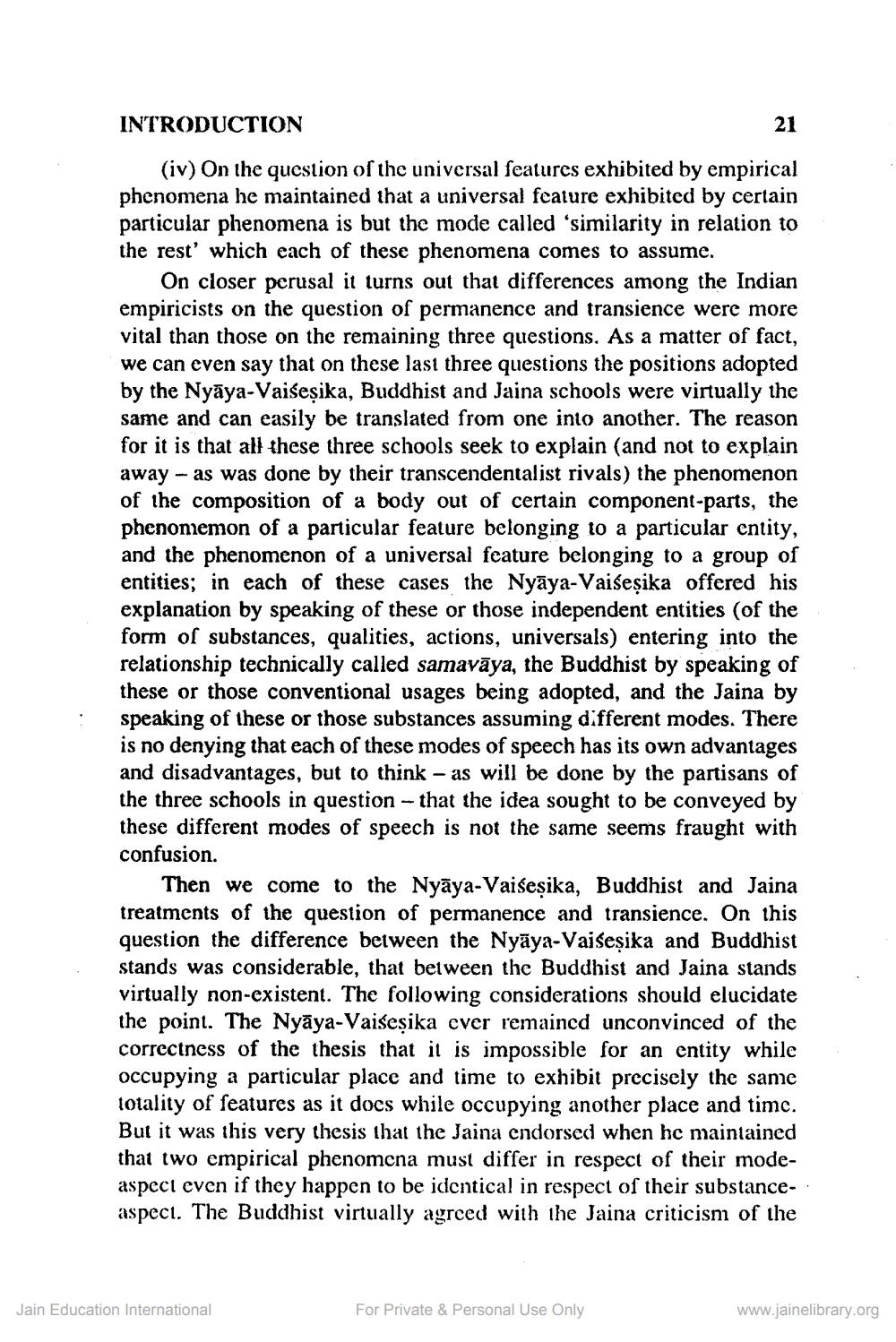________________
INTRODUCTION
21
(iv) On the question of the universal features exhibited by empirical phenomena he maintained that a universal feature exhibited by certain particular phenomena is but the mode called 'similarity in relation to the rest' which each of these phenomena comes to assume.
On closer perusal it turns out that differences among the Indian empiricists on the question of permanence and transience were more vital than those on the remaining three questions. As a matter of fact, we can even say that on these last three questions the positions adopted by the Nyāya-Vaisesika, Buddhist and Jaina schools were virtually the same and can easily be translated from one into another. The reason for it is that all these three schools seek to explain (and not to explain away - as was done by their transcendentalist rivals) the phenomenon of the composition of a body out of certain component-parts, the phenomemon of a particular feature belonging to a particular cntity, and the phenomenon of a universal feature belonging to a group of entities; in each of these cases the Nyāya-Vaiseșika offered his explanation by speaking of these or those independent entities (of the form of substances, qualities, actions, universals) entering into the relationship technically called samavāya, the Buddhist by speaking of these or those conventional usages being adopted, and the Jaina by speaking of these or those substances assuming different modes. There is no denying that each of these modes of speech has its own advantages and disadvantages, but to think - as will be done by the partisar the three schools in question - that the idea sought to be conveyed by these different modes of speech is not the same seems fraught with confusion.
Then we come to the Nyāya-Vaiseșika, Buddhist and Jaina treatments of the question of permanence and transience. On this question the difference between the Nyāya-Vaisesika and Buddhist stands was considerable, that between the Buddhist and Jaina stands virtually non-existent. The following considerations should elucidate the point. The Nyāya-Vaisesika cver remained unconvinced of the correctness of the thesis that it is impossible for an entity while occupying a particular place and time to exhibit precisely the same totality of features as it does while occupying another place and time. But it was this very thesis that the Jaina endorsed when he maintained that two empirical phenomena must differ in respect of their modeaspect even if they happen to be identical in respect of their substanceaspect. The Buddhist virtually agreed with the Jaina criticism of the
Jain Education International
For Private & Personal Use Only
www.jainelibrary.org




